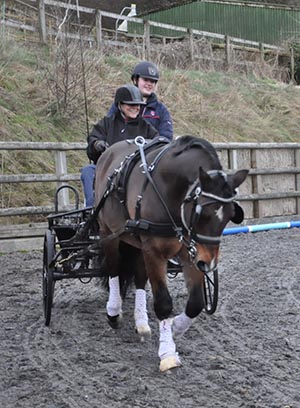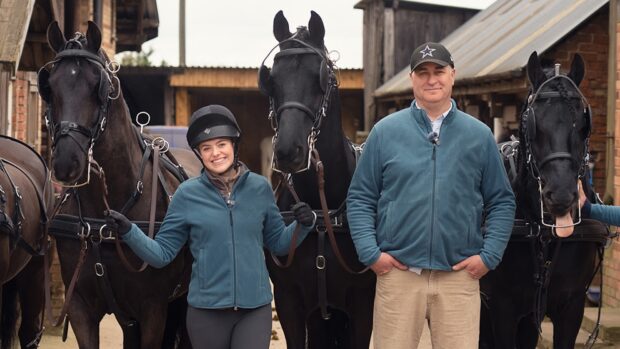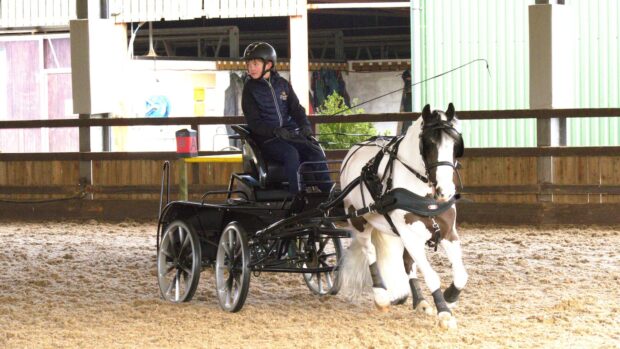In my last blog I suggested that a New Year’s resolution to try an exciting experience related to driving might be worthwhile. This week I gave a talented rider her first hands-on session of carriage driving and, not only was she a fantastic pupil, but she is now resolved to take up driving, so a great start to the New Year for us both!
My pupil was keen to learn as she has a small Section A pony, currently a field companion, and feels he would enjoy driving as he is rather too sharp for a small rider.
I introduced her and her friend to my small driving ponies: Sherry the Shetland at 36 inches, an 11.2hh Section A and 12hh Section B. All 3 love driving but were unsuited to being lead rein and first ridden ponies.
In fact the Section B has a long list of previous short-term owners on his passport. Apparently though a stunning looker, he would buck the children off in the show ring when bored! Despite this I broke him to harness easily and he now drives single and pair. He is forward going, but has never bucked in the carriage. I think like many small ponies, he is happy he has found a job he really enjoys!
For our lesson we started with a session in the stable looking at harness and how to fit it. Mr J, my Section C, was rather surprised by the time taken on this activity, but there is a lot to learn about and my pupil was keen to understand how the harness worked, the range of adjustment and possible options.
Once in the arena, I demonstrated the voice commands I use and she long-reined him to get the feel of what he was like. After putting to, she stood on the backstep to watch and listen while I drove the transitions up and down through the basic paces and changes of rein.
 For beginners I usually use a dual seat, so I sit alongside them, and for very nervous or young drivers I use dual reins too. But as she is a very competent rider, I was happy to swap positions and advise from the backstep. She had a good session driving, finishing with some impressive extended trot work (pictured top).
For beginners I usually use a dual seat, so I sit alongside them, and for very nervous or young drivers I use dual reins too. But as she is a very competent rider, I was happy to swap positions and advise from the backstep. She had a good session driving, finishing with some impressive extended trot work (pictured top).
I then gave her friend, who had been watching intently and taking photos, the experience of being on the backstep so they could remember as much as possible between them. She was also very enthusiastic and is keen to have a go at driving in the coming weeks.
Taking the pony out of the carriage is the reverse of putting to giving them a test to see what they remembered. It’s so important to learn best practice from the start and well worth spending that extra bit of time to get it right as then it will become second nature and greatly reduces your risk of an accident.
Mr J was unharnessed and made comfortable in the stable with plenty of praise for being patient. As he is well schooled, he is very obedient, but his main love is speed and he adores powering on — he would have been only too happy to spend the entire session at extended trot!
We then looked at other carriages, including a 2-wheeled exercise vehicle and a show carriage suitable for a Section A. A 2-wheeled carriage is always better for the novice driver and pony as it follows the pony and cannot jack knife like a 4-wheeler can.
It was a very productive and enjoyable afternoon all round and it didn’t even rain! I’m really looking forward to helping these 2 riders again and hope some of my non-driving readers might feel inspired by them to have a go taking up the driving reins themselves.
Emily



